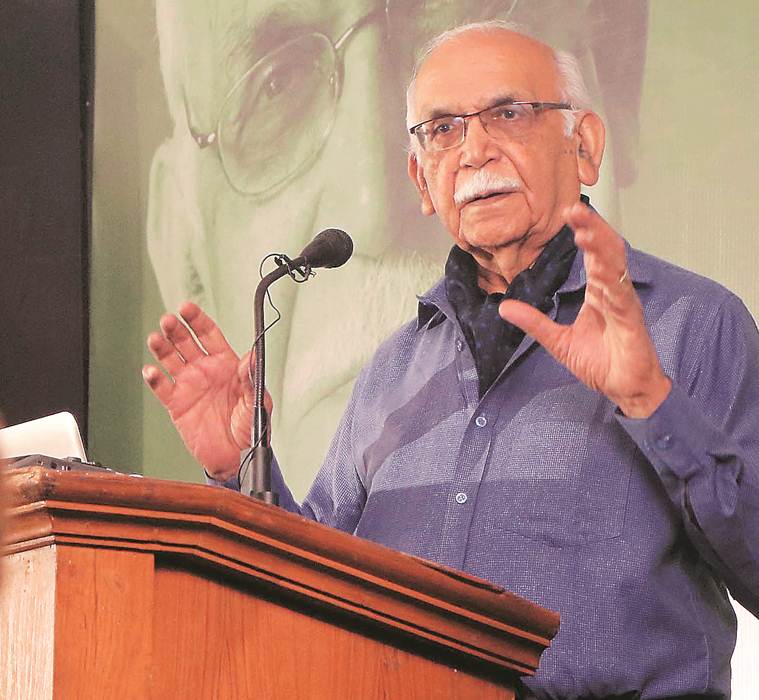He has pioneered different ways of seeing and thinking about the art of the past and established clear new paradigms in the area of art historical research.
Written by Parul | Chandigarh | Published: February 7, 2018 9:13 am

Prof B N Goswamy during an audio visual presentation as part of Dr MS Randhawa Art and Literature Utsav 2018 at Punjab Kala Bhawan in Sector 16, Chandigarh, on Tuesday. (Photo-Kamleshwar Singh)
TIME STOOD still as art historian and thinker, Professor B N Goswamy, embraced the profound question of the magical, mysterious, immeasurable, infinite quality of time, presenting a world of thought, different from where we live. In an absorbing audio-visual presentation, Aspects of Time in Indian Painting: Kaala, Samay, Waqt, the professor, as part of the Dr M S Randhawa Memorial, took a leap across time, space and ages to look at how silently and soft-footedly, time enters a painter’s work, as “we are part of this magnum mystery”.
Organised by Punjab Kala Parishad and Punjab Lalit Kala Akademi as part of the ongoing Dr M S Randhawa Arts and Literature Festival 2018, Goswamy, India’s most distinguished art historian today, was also conferred the Punjab Gaurav Sanmaan by the Punjab Arts Council for his contribution in the field of art. His work, in the areas of research and teaching, has influenced a whole generation of scholars.
He has pioneered different ways of seeing and thinking about the art of the past and established clear new paradigms in the area of art historical research. As a result of his ceaseless efforts, the Indian artist of the past has begun to emerge slowly from the dense fog of anonymity to be recognised as a thinking individual, capable of taking creative decisions.
“In our tradition, there is nothing as end of time,” observed Goswamy while talking about geological, mythical time, its ineffability, with no beginning and end. With episodes from our ancient texts, beliefs, mythology, scriptures.the art historian connected the dots as he, with carefully chosen visuals of Indian miniature paintings, minutely looked at how Indian painters gave us a fleeting glimpse of time visually in their paintings.
“We have to develop a strategy of seeing this continuous pictorial narration of the same figure appearing time after time and also feel the treatment of time in a soundless manner,” Dr Goswamy referred to many paintings, one where the same pandit is performing three rituals in the same work at different times, Krishna as a child recalling his previous reincarnation as his mother narrates an episode from the Ramayana, a painting depicting the Gopis distraught at Krishna’s disappearance and their enactment of Krishna.”
And then, you see a device of drama by the painters as the writer of a text appears in a painting, like we see Surdas
appearing in a work depicting how Radha and Krishna reverse roles. “The interesting thing is that this feature does not happen in Islamic art. Here in these miniature paintings, time is condensed, abbreviated, fluid and you see its malleability,” Dr Goswamy refers to another work, where the 10 Sikh Gurus appear together at the same time. This would not be possible in a European setting for it would be considered illogical. As Krishna said, ‘I am time grown old’.”
https://punjablalitkalaakademi.com/wp-admin/post-new.php
